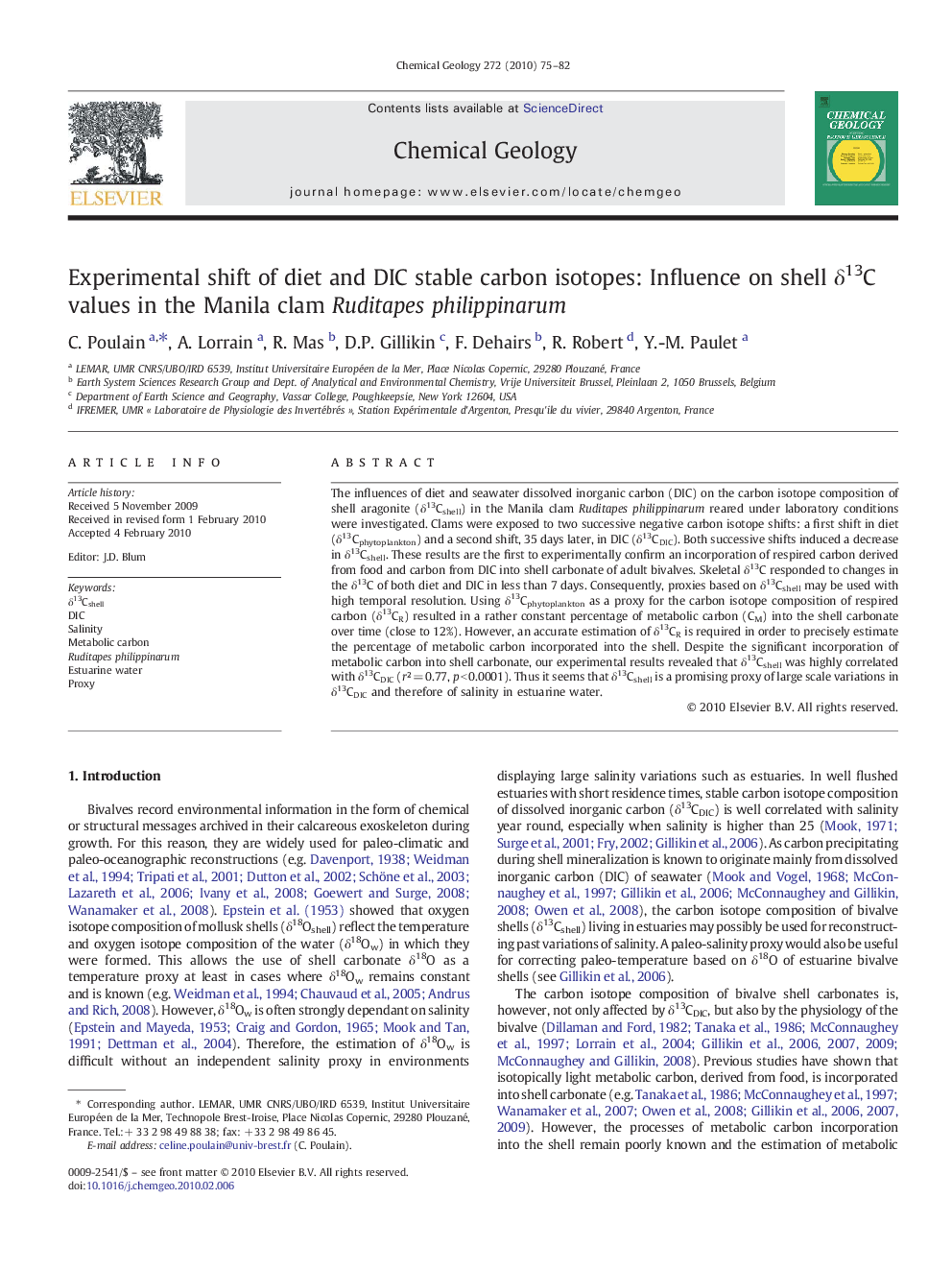| Article ID | Journal | Published Year | Pages | File Type |
|---|---|---|---|---|
| 4700094 | Chemical Geology | 2010 | 8 Pages |
The influences of diet and seawater dissolved inorganic carbon (DIC) on the carbon isotope composition of shell aragonite (δ13Cshell) in the Manila clam Ruditapes philippinarum reared under laboratory conditions were investigated. Clams were exposed to two successive negative carbon isotope shifts: a first shift in diet (δ13Cphytoplankton) and a second shift, 35 days later, in DIC (δ13CDIC). Both successive shifts induced a decrease in δ13Cshell. These results are the first to experimentally confirm an incorporation of respired carbon derived from food and carbon from DIC into shell carbonate of adult bivalves. Skeletal δ13C responded to changes in the δ13C of both diet and DIC in less than 7 days. Consequently, proxies based on δ13Cshell may be used with high temporal resolution. Using δ13Cphytoplankton as a proxy for the carbon isotope composition of respired carbon (δ13CR) resulted in a rather constant percentage of metabolic carbon (CM) into the shell carbonate over time (close to 12%). However, an accurate estimation of δ13CR is required in order to precisely estimate the percentage of metabolic carbon incorporated into the shell. Despite the significant incorporation of metabolic carbon into shell carbonate, our experimental results revealed that δ13Cshell was highly correlated with δ13CDIC (r² = 0.77, p < 0.0001). Thus it seems that δ13Cshell is a promising proxy of large scale variations in δ13CDIC and therefore of salinity in estuarine water.
